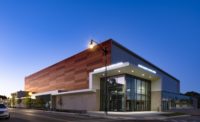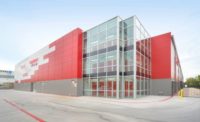The rising demand for electric vehicles (EV) coupled with incentives earmarked for the transition to clean energy contained in Inflation Reduction Act (IRA) are spurring the development of new EV battery and EV manufacturing plants throughout the U.S. Today, EV battery manufacturing plants are being constructed in close proximity to EV auto production facilities, many of which are located in the South, Midwest and Northeast. This concentration of EV battery manufacturing plants is creating an emerging economic region known as the “Battery Belt.”
Demand for EVs is expected to account for 45% of the market in 2035, up from a forecast of 32% in 2030. According to S&P Global, by 2030, over one in four new passenger cars sold will be an EV. To keep up with demand for the batteries that power these vehicles, construction of EV battery manufacturing plants continues to ramp up.
According to a National Resources Defense Council (NRDC) commissioned report conducted by Atlas Public Policy, automakers and battery manufacturers have plans to spend $54 billion to construct or expand 37 EV battery manufacturing facilities across the country. The report noted that if these plants are built and operating by 2030, they would have the capacity to support approximately two-thirds of the passenger vehicle market being electrified.
As these enormous plants – often referred to as gigafactories – come online to produce the battery component of EVs, selection of versatile construction materials like insulated metal panels (IMPs) are being used to construct them.
IMPs are weather-tight panels that provide a strong thermal and moisture barrier. These single component, factory pre-engineered systems made with steel skins and an insulating foam core are a widely used high-performance, low-energy building envelope solution. The exceptional air and weather tightness of these panels significantly reduces heat loss or heat gain, ensuring the comfort of building occupants.
An energy-saving and circular building material, many IMPs are constructed using recycled materials. The steel in these panels can be recycled and the foam can be repurposed, both pre- and post-consumer. The many climate-friendly features of IMPs can help construct EV battery facilities that could potentially have a lower total carbon footprint with less embodied carbon than concrete wall assemblies, depending on the brand specified.
IMPs could also help construction schedules of EV battery plants stay on track. Requiring only one installer, these panels are installed faster than multi-part cladding systems, helping reduce construction delays and allowing for faster building dry-in.
The excellent thermal performance, high R-values and energy efficiency provided by IMPs are increasing their use in the construction of large, energy intensive buildings like EV battery manufacturing plants. A case in point, SK Battery America, a developer of lithium-ion batteries for EVs, used IMPs in the construction of its plant located in Commerce, Georgia. The building envelope of the 2.4 million square foot (the equivalent of about 42 football fields) SK battery plant was constructed with 1 million square feet of insulated metal panels.
As more of these EV battery plants are planned, IMPs are a building cladding option that could help these battery manufacturing plants lower their carbon footprints and play an important role in mitigating climate change just like the products they produce.



